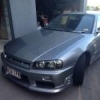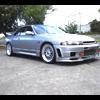Announcements
-
Similar Content
-
Latest Posts
-
By Dose Pipe Sutututu · Posted
Once you go non OEM DBW e-throttle, you'll never go back to a cable throttle. Just so good in every single way. -
By Dose Pipe Sutututu · Posted
Feels like most tend to keep it under 8000rpm for hydraulic lifters. Quick search on the net and those on Rennlist like to keep theirs under 7500rpm, Speed Talk under 8000rpm. Perhaps start to take timing out for 7250rpm and soft cut it by 8000rpm. -
Ok, so I just had a chat with my mechanic. He said there is no real source of lead in the engine, the bearings and pistons are aluminium and the rings I think he said are steel. He doesn't recall what additive he used but that along with the thicker 20w50 he used could be a source of lead. It's put me at ease a little bit and I guess I'll just have to wait 5000 k's to do another change and see if anything is different. I appreciate you guys chiming in. I have a habit of immediately thinking worst case with things like this.
-
By TurboTapin · Posted
Finished street tuning it to 20psi with WMI. Haltech really makes it easy for you with those 4D maps. I have 17psi springs in my gates but they seem to only start cracking around 17 and taper off around 19/20psi. I was originally on 14psi springs but I'm expecting to need ~35-38psi to hit my goal and I was worried It wouldn't make it. Dyno's booked for next Friday. All I have left is to replace my el cheapo amazon special type k connectors on my EGT's. They have no strain relief and well are just all around cheap compared to what I use at work. I had the wires in one get lose and I don't want a repeat of that on the Dyno. I also want to figure out why I have 4 cylinders that are perfectly identical, one that's 30C over and another that's 30C under. I'm chocking this up to EGT position in the runners not being identical and will verify that as well. Wish me luck! Hopefully I make all the power with no bang. Question for the group, I have my rev limiter set to 8000rpm. I have a fully built head and new lifters but I stuck with hydro's. Is 8000 fair or am I being to cautious? -
By hattori hanzo · Posted
Anyone used A to Z Imports in Goldcoast? I was referred to them for engineering and RWC? However besides a few one off bad google reviews it all seems pretty legit? https://www.atozimports.com.au/
-









Recommended Posts
Create an account or sign in to comment
You need to be a member in order to leave a comment
Create an account
Sign up for a new account in our community. It's easy!
Register a new accountSign in
Already have an account? Sign in here.
Sign In Now